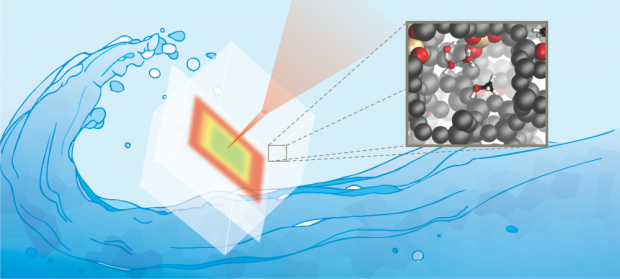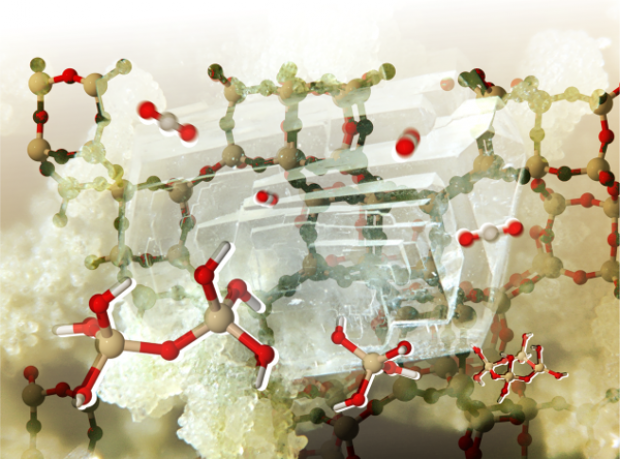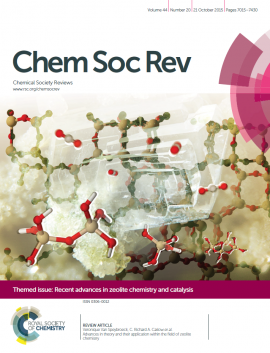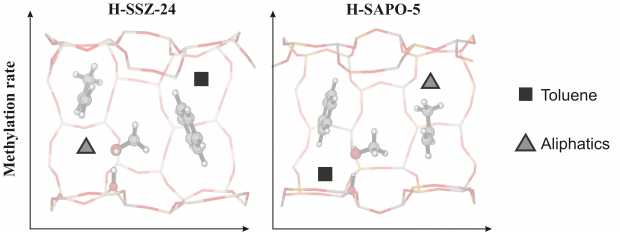I. Lezcano-Gonzalez, D. Wragg, W. A. Slawinski, K. Hemelsoet, A. Van Yperen-De Deyne, M. Waroquier, V. Van Speybroeck, A. Beale
Journal of Physical Chemistry C
Abstract
Ammonia-selective catalytic reduction (NH3-SCR) using Cu zeolites is a well-established strategy for the abatement of NOx gases. Recent studies have demonstrated that Cu is particularly active when exchanged into the SSZ-13 zeolite, and its location in either the 6r or 8r renders it an excellent model system for fundamental studies. In this work, we examine the interaction of NH3-SCR relevant gases (NO and NH3) with the Cu2+ centers within the SSZ-13 structure, coupling powder diffraction (PD), X-ray absorption spectroscopy (XAFS), and density functional theory (DFT). This combined approach revealed that, upon calcination, cooling and gas exposure Cu ions tend to locate in the 8r window. After NO introduction, Cu ions are seen to coordinate to two framework oxygens and one NO molecule, resulting in a bent Cu–nitrosyl complex with a Cu–N–O bond angle of ∼150°. Whilst Cu seems to be partially reduced/changed in coordination state, NO is partially oxidized. On exposure to NH3 while the PD data suggest the Cu2+ ion occupies a similar position, simulation and XAFS pointed toward the formation of a Jahn–Teller distorted hexaamine complex [Cu(NH3)6]2+ in the center of the cha cage. These results have important implications in terms of uptake and storage of these reactive gases and potentially for the mechanisms involved in the NH3-SCR process.

 Open Access version available at
Open Access version available at 


